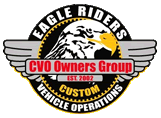Yes! From Crutchfield (pretty knowledgeable folks):
A crossover divides an input signal into two or more outputs of different ranges of frequencies, so tweeters, speakers, and subs will each get only the range of frequencies they were designed to play. Frequencies outside each designated range are attenuated or blocked.
Every speaker system needs a crossover of some type. Component speaker sets come with separate outboard crossovers, many with tweeter level selectors. Every full-range, coaxial speaker — with its tweeter mounted in front of the woofer cone — already has a tiny crossover network built into it somewhere.
If you want to run an "active" system, however, you'll need a more sophisticated crossover. In an active sound system each driver (tweeter, woofer, sub) has its own channel of amplification. This dramatically increases the available power, dynamic range (softest to loudest sounds), and your control of the system’s tonal response over the whole audio spectrum.
Almost all amplifiers come with built-in high- and low-pass filters that can serve as the crossovers in a component system. But these filters are small accessory features built into the amps and are often more inaccurate with less fidelity than a separate, dedicated electronic crossover.
An active crossover gets wired between the receiver and amplifier and cuts out the unwanted frequencies before the amp wastes energy boosting them, so the amp can focus on only the frequencies it's supposed to amplify. Active crossovers usually have volume controls on every channel or pair of channels so you can keep all the “voices” of the different drivers in balance. Some active crossovers include other sound-processing features like equalization for further tweaking of the sound to your personal satisfaction.
In a hypothetical 4-way active car audio system the original full-range audio signal might be crossed-over as follows:
Low frequencies (say 100 Hz and lower) go to subwoofers.
Midbass speakers get frequencies between 100 and 250 Hz.
Midrange speakers would see frequencies between 250 and 3,000 Hz.
All frequencies above 3,000 Hz are handled by the tweeters.
Keep in mind that the crossover points listed here are for example only and do not apply to every car or speaker system out there. The best crossover points for one vehicle might not be the best for another. It all depends on the speakers being used and the acoustic properties of the car. Most electronic crossovers allow you to choose from several crossover points.
 Author
Topic: Cross overs, do I need to use them? (Read 842 times)
Author
Topic: Cross overs, do I need to use them? (Read 842 times)

